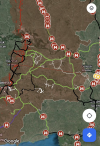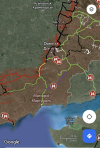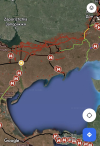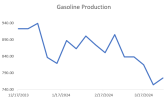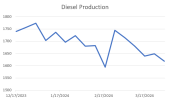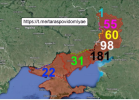Antares
Respected Leader
Mielenkiintoinen twitter-ketju joka on voinut olla täällä jo aikaisemmin, koska se on julkaistu 4.3.2024 eli noin kuukausi sitten:
Prompted by some of the work of @witherapathy and @verekerrichard1 – I’ve been thinking about the evolution and impact of attrition on Russian artillery in Ukraine.
New barrels come with an EFC rating (Effective Full Charge - the number of times that a round can be fired using the maximum amount of available propellant charge). New Western guns have an at-factory-new EFC rating of maybe 3,500.
However, because full-charge firing is relatively rare, since you need range to be able to bracket the enemy at the target end, this actually means that a new M777 for example can probably go bang about 5,000 times before its barrel is worn to the point of being useless.
Soviet metallurgical science was apparently outstanding; Russia's less so. If we assume that *all* of the available barrels were 3,500 EFC at delivery then we're probably being rather generous with the Russian kit, and a little bit with the Soviet legacy stuff.
However, the Soviet stuff has decades of exercise and operational wear (from Afghanistan, Chechnya twice, Georgia, Syria and so on). If we take maximum numbers (from, say IISS Military Balance 2018) then Russia might have had 14,595 available guns - and by extension barrels.
At 5,000rpb (assuming, wrongly, that every single one was factory new), & discounting new factory production, Russia could have fired about 73 million rounds before its last barrel was useless. That's *lots* of ammunition: they'd probably fired 18 million by October last year.
The tempo has been very high since then because that's more or less the start of the Avdiivka encirclement operations, but October 23 was about three-quarters of the way to where we are now, so as a gross estimate they might have now fired 24 million.
That's a third of their total capacity to deliver tubed artillery rounds degraded just through use - *if* every single barrel was of 21st century western quality (which they weren't), and if every one of them was factory-brand-new (which they definitely weren't).
There are other effects: worn barrels are less accurate, so to achieve the same target-end effect needs more rounds, and that accelerates the process of degradation. The fewer guns there are available, the higher the rates getting put through those that remain and so on.
Assuming all of the kit was brand new, and accounting for barrel-wear, the 99% barrel availability (since that looks like the proportion that's removed in the observations of the storage sites, & they wouldn't be wasting time cannibalising parts that were useless) & the campaign average *reported* loss-rates, there would have been roughly 11 months' worth (+/- three months) of barrels remaining in October '23. So, that's 7 (+/-3) from now.
Some caveats:
i) the 'reported' daily Ukrainian General Staff update figures include mortars, so the total is well above the upper-bound for 'real' guns. Who knows what the actual losses are? Guns operate at range, so the @oryxspioenkop & @WarSpotting data will be low.
ii) Running reported loss-rates for guns have been exceptionally high since the start of this year (maybe there’s new Ukr EW; new tactics - winged UAS as FPV 'mother-ships' extending their range; new precision kit; etc..
iii) Domestic barrel production: if the Russians continue firing 10,000 rounds per day, then on average that's the equivalent of burning 2 from-new guns every 24 hours. Just to keep pace with barrel-wear Russian industry would need to be producing 700(+) barrels a year.
...which I just don't believe is credible (however we are starting to see Ukrainian attacks on steel plants in depth, so maybe *they* do).
-
Pari poimintaa kommenteista, laitan ne spoilerin taakse:
-
MUOKKAUS: muistan että Trent Telenko on kirjoittanut yhden tai useamman twitter-ketjun Neuvostoliiton ja ryssän tykistöstä, sellaisen, jossa oli hänen arvioitaan tai lukeamiaan arvioita näiden tykkien EFC-kestosta. Muistelen että olisi ollut selvästi alle länsimaisen kaluston, oliko jopa 2 000 EFC tai kenties 2 500 EFC?
Tästä on näkynyt montaa mielipidettä:
1) on niitä jotka uskovat tuohon numeroon melkein varauksetta ja laskevat sen perusteella koko tykistön kestoikää,
2) sitten on niitä, jotka muistuttavat että jokainen laukaus ei ole EFC ja täten tykkien "todellinen kestoikä" on suurempi,
3) toiset taas ottavat länsimaisen kaluston suoraan vertailukohteeksi eli arvaavat että ryssän kalusto on vähintään yhtä hyvää ja siten kestää vähintään yhtä kauan
4) viimeisenä tulevat ne jotka arvelevat että EFC-numerot ovat hyödyttömiä koska ryssä ei välistä niistä vaan jatkaa tykeillä ampumista niin kauan kunnes se ei ole fyysisesti mahdollista. Näiden mukaan jokaisella tykillä ammutaan siis kymmeniä tuhansia laukauksia. Toki samalla yksittäisen tykin tarkkuus heikkenee rajusti mutta sitä kompensoitaisiin ampumalla enemmän. Toisaalta tässä ei selitetä, miksi ryssän varastotukikohdista on poistunut suuri määrä kalustoa tämän sodan aikana JOS riittäisi että alunperin aktiivijoukkojen käytössä olleella kalustolla ammutaan muutama kymmenen tuhatta laukausta per tuliputki.
Laskentakaavasta riippuen saadaan erilainen "tykistön kestoikä" ja tietyissä arvioissa tullaan siihen tulokseen että tuliputkien määrä ja siten "tykistön kestoikä" ei olekaan se ensimmäinen rajoittava tekijä vaan todennäköisemmin saatavilla oleva laukausten määrä.
-
MUOKKAUS 2: hakemalla löysin pari Trent Telenko twitter-ketjua aiheesta, lainaan alle pätkät.
Ensimmäinen ketju on julkaistu 15.8.2022: LÄHDE
Older M777 and newer Russian guns last 2,000 rounds.
According to Perun, older Soviet guns vary from 1000 to 1,500 EFC for their lifetime.
And no one knows how many EFC Russian frontline or "reserve" barrels had through them before the latest Russian invasion kicked off.
-
Toinen ketju on julkaistu 17.3.2024: LÄHDE
At this point a lot of pro-Russian accounts will point to the huge reserve of Russian artillery barrels.
Here is the thing they desperately don't want you to know.
Mid-Cold War era metallurgy was only good for about 1,000 to 1,500 rounds "equivalent full charge" or EFC.
Assuming 4,000 tubes still left in the Russian equipment reserves at cherry new 1.500 rounds EFC. That works out as:
4,000 * 1,500 = 6,000,000 rounds.
That sounds like enough for another couple of years of fighting...except those guns aren't cherry.
Prompted by some of the work of @witherapathy and @verekerrichard1 – I’ve been thinking about the evolution and impact of attrition on Russian artillery in Ukraine.
New barrels come with an EFC rating (Effective Full Charge - the number of times that a round can be fired using the maximum amount of available propellant charge). New Western guns have an at-factory-new EFC rating of maybe 3,500.
However, because full-charge firing is relatively rare, since you need range to be able to bracket the enemy at the target end, this actually means that a new M777 for example can probably go bang about 5,000 times before its barrel is worn to the point of being useless.
Soviet metallurgical science was apparently outstanding; Russia's less so. If we assume that *all* of the available barrels were 3,500 EFC at delivery then we're probably being rather generous with the Russian kit, and a little bit with the Soviet legacy stuff.
However, the Soviet stuff has decades of exercise and operational wear (from Afghanistan, Chechnya twice, Georgia, Syria and so on). If we take maximum numbers (from, say IISS Military Balance 2018) then Russia might have had 14,595 available guns - and by extension barrels.
At 5,000rpb (assuming, wrongly, that every single one was factory new), & discounting new factory production, Russia could have fired about 73 million rounds before its last barrel was useless. That's *lots* of ammunition: they'd probably fired 18 million by October last year.
The tempo has been very high since then because that's more or less the start of the Avdiivka encirclement operations, but October 23 was about three-quarters of the way to where we are now, so as a gross estimate they might have now fired 24 million.
That's a third of their total capacity to deliver tubed artillery rounds degraded just through use - *if* every single barrel was of 21st century western quality (which they weren't), and if every one of them was factory-brand-new (which they definitely weren't).
There are other effects: worn barrels are less accurate, so to achieve the same target-end effect needs more rounds, and that accelerates the process of degradation. The fewer guns there are available, the higher the rates getting put through those that remain and so on.
Assuming all of the kit was brand new, and accounting for barrel-wear, the 99% barrel availability (since that looks like the proportion that's removed in the observations of the storage sites, & they wouldn't be wasting time cannibalising parts that were useless) & the campaign average *reported* loss-rates, there would have been roughly 11 months' worth (+/- three months) of barrels remaining in October '23. So, that's 7 (+/-3) from now.
Some caveats:
i) the 'reported' daily Ukrainian General Staff update figures include mortars, so the total is well above the upper-bound for 'real' guns. Who knows what the actual losses are? Guns operate at range, so the @oryxspioenkop & @WarSpotting data will be low.
ii) Running reported loss-rates for guns have been exceptionally high since the start of this year (maybe there’s new Ukr EW; new tactics - winged UAS as FPV 'mother-ships' extending their range; new precision kit; etc..
iii) Domestic barrel production: if the Russians continue firing 10,000 rounds per day, then on average that's the equivalent of burning 2 from-new guns every 24 hours. Just to keep pace with barrel-wear Russian industry would need to be producing 700(+) barrels a year.
...which I just don't believe is credible (however we are starting to see Ukrainian attacks on steel plants in depth, so maybe *they* do).
-
Pari poimintaa kommenteista, laitan ne spoilerin taakse:
Richard Vereker kommentoi näin: Nice thread, thank you. I don't know how many shells a Russian gun is designed to fire or can fire at most, but I think that they are prepared to fire more than 5,000 shells thought each, yes they lose a lot of accuracy and range, but Russia never valued accuracy that much. so they can and will, even if they would prefer not to. but whatever the number is 6,000 or whatever, I do think there is value in doing this sort of numbers. LÄHDE
Johon Mr. Sandwiches vastasi näin: On absolute numbers that they’re willing to put through each barrel, there’s probably no reasonable estimate. On the other hand, the fact that they’ve stripped out so many barrels from reserve chassis and left the vehicles behind, implies that they must be burning through barrels more quickly than the Ukrainians are destroying complete guns - which if Kyiv’s official figures are to be believed, is “very quickly”.
-
Niklas Heuser vastasi näin: Some random informations: I once read that russia has basically no barrel production & that they use an austrian machine for it. Mayby one can deduct a production capacity from that?Also I think its worth distinguishing barrel types, PERUNs newest video had a segment on that.
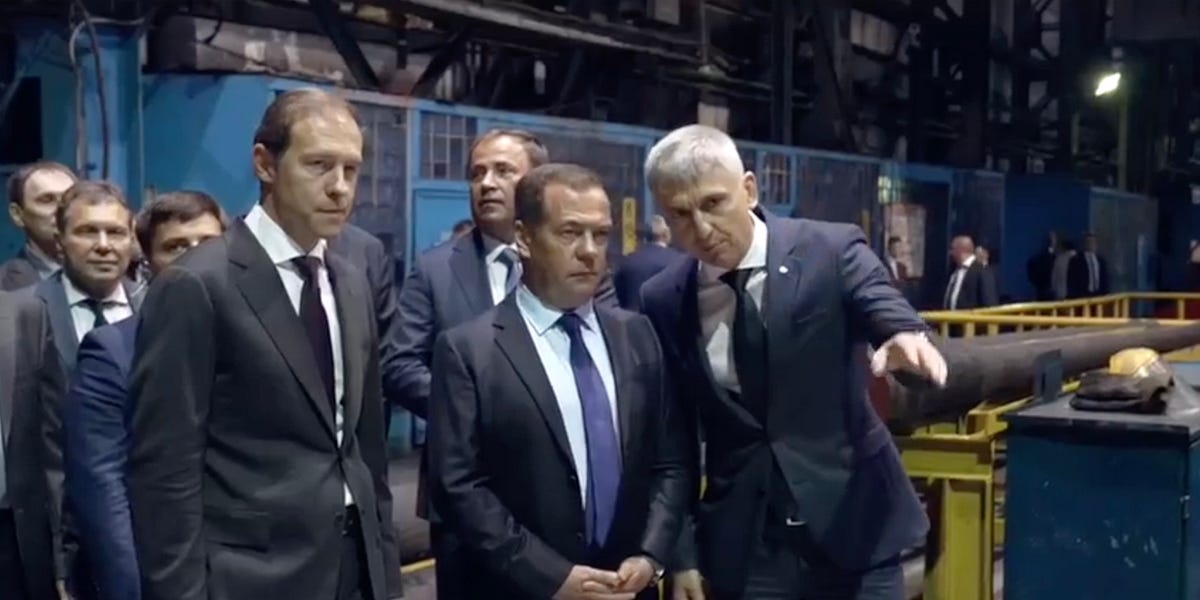
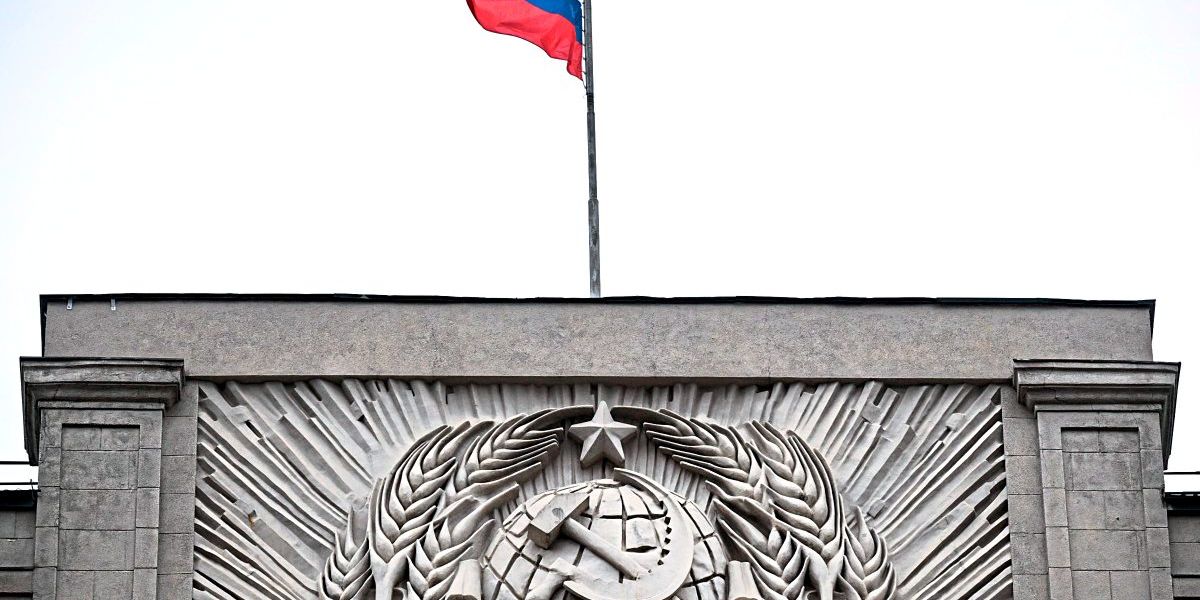
 derstandard.de
derstandard.de
https://twitter.com/kamilkazani/status/1724522181055422813
Johon Mr. Sandwiches vastasi näin: On barrels: Since much (perhaps 80%-90%) of the reserve stock-pile equipment was held in the open-air, it has proven possible to track changes using open-source satellite imagery.
The majority of the 10%-20% that was not observable was almost certainly the component that was in the best (and possibly working-) order: this will have been the first to have been removed for use in the campaign.
Of the remaining (initially observable) 80%-90%, a number of visible changes support the hypothesis that Russian 152mm guns–especially self-propelled varieties–are becoming increasingly scarce.
eg, 2S5 ‘Giatsint-S’ self-propelled and 2A26 ‘Giatsint-B’ towed 152mm howitzers share interchangeable barrels, & consequently removals from storage of both equipment-complete, & separately observable removal of their barrels, contribute to the same pool of available guns.
A substantial proportion of previously observable 2A36 have been removed from pre-war reserve locations, while for the self-propelled 2S5 , figures approach 50% removed but of those chassis remaining over 99% had already been stripped of their barrels by the end of Sep 23.
Other 152mm SPGs, eg 2S19 & 2S3, were initially numerous (active/reserve numbers being 450/150, & 800/1,000 respectively), but proportional losses of these types is way higher than for the 2S5 (see above), & with no obvious large pool of replacement barrels on which to draw
The disproportionately high percentage loss of its total (active and reserve) stock of Self-Propelled 152mm artillery, means that in order to maintain its rates of fire Russia is almost certainly leaning heavily on a rapidly reducing number of these platforms…
… as well as the less mobile and less well protected towed 152mm howitzers from which they have yet to cannibalise the barrels.
Johon Niklas Heuser vastasi näin: I really like your conclusions and I want to add that not all barrels offer the same combat value. 3.000 152 mm barrels of Type D-1 might be left at some point but prove barely useable since they are designed for lower propellant charges and only offer a range of 12 km
Therefore it is possible that they can only produce ~ 3.000 large bore barrels of all types incl. tank barrels a year. One would have to inquire at the manufacturer for details though...
I followed my barrel production rabbit hole a bit and found a 1980s CIA document on the capacities of the machines used for barrel forgeing. It states that the SU had 3 SXP 55 and 1 SXP 85 that offer a capacity of 14.000 barrels. However, only 1 SXP 55 might still be in use.

Here it is linked: https://cia.gov/readingroom/docs/doc_0000496800.pdf
Johon Mr. Sandwiches vastasi näin: Thank you! They’ve a *lot* less in reserve than they used to have…
(hän linkitti viestiinsä Uri Kikaskin twiitin jossa oli satelliittikuvista laadittu gif jossa näkyi nopeasti tyhjenevä ryssän varastotukikohta, tosin kyseinen paikka oli vain pieni osa laajempaa kokonaisuutta ja alueella varastoitiin raskaita kranaatinheittimiä: LINKKI)
-
Peter Wolf kommentoi näin: Need to consider shell calibers and system type.
D1 & M30 barrels don't matter. Mortars have all been issued, they are down to production + import there.
Best source is still the Covert Cabal work which I'm sure you're aware of.
 m.youtube.com
m.youtube.com

-
Serhiy Rybasov kommentoi näin: "worn to the point of being useless" - that's a bit of exaggeration, actually Ukrainian artillery before 2022 Summer was nearly all far over the EFC limit of their barrels and still useful. You just need more time and shels to hit your target with a wornout barrel, and expierienced artillerist to do it.
Johon Mr. Sandwiches vastasi näin: Which is (sort of) fine if you've got unlimited time, bags of spare ammunition, and an enduring and robust logistic system to feed the guns.
Johon Serhiy Rybasov vastasi näin: Unfortunately, it's partly true for the Russians. I hope it's changing with massed drone warfare, yet in this regard the Rusians are also on par with us and actualy much ahead (specifically in this regard) of the West.
-
BAAS kommentoi näin: Thanks for the numbers and the analysis approach. Basically, I share the optimism that these numbers bring. The quality will definitely decrease constantly, and so will the quantity. On the Russian side, however, the focus has always been on quantity.
I would therefore like to point out that you should not only pay attention to industry specifications, but also practical figures. For example, with the PzH2000 I read that the EFC rating was stated as 4,500 shots, but the endurance time of the barrels was sometimes at 20,000.
If you apply this example to your numbers, the time frame changes significantly. Nevertheless, I remain very optimistic that we will soon see a significant decline in quantity.
-
Douglas Stone kommentoi näin: Great thread. But questions. How many units are “destroyed” before the barrels wear? Can those barrels be salvaged? “Useless” =inaccurate. Soviet doctrine= mass fires saturate an area, less accuracy required. I don’t think they worry about barrel wear. Desperation Conscripts
Johon Mr. Sandwiches vastasi näin: Useless also means 'prone to breach premature' detonations, of course. In terms of the implications of wear, inaccuracy tends to spread the fall of shot so that the intended beaten zone gets a smaller proportion of the intended treatment, which means more rounds required which accelerates the process of fleet-wide degradation. It also has significant impact on muzzle-velocity, and by extension achievable range.
Johon Douglas Stone vastasi näin: Oh, completely agree. But Rus is using 1950s tanks with no reactive armor. They are throwing everything they can muster, regardless of functionality. I am not sure the average Russian conscript really has any concept of how artillery should function. Very short lifespan.
Johon Mr. Sandwiches vastasi näin: We're in violent agreement, I think. There is some fascinating analysis from over the past weekend, by
@whitherapathy, about how varied Russian equipment types are over time as a result of attrition and supply, here:
https://twitter.com/whitherapathy/status/1764390352289432025
Johon Mr. Sandwiches vastasi näin: On absolute numbers that they’re willing to put through each barrel, there’s probably no reasonable estimate. On the other hand, the fact that they’ve stripped out so many barrels from reserve chassis and left the vehicles behind, implies that they must be burning through barrels more quickly than the Ukrainians are destroying complete guns - which if Kyiv’s official figures are to be believed, is “very quickly”.
-
Niklas Heuser vastasi näin: Some random informations: I once read that russia has basically no barrel production & that they use an austrian machine for it. Mayby one can deduct a production capacity from that?Also I think its worth distinguishing barrel types, PERUNs newest video had a segment on that.


Oberösterreichische Firma wehrt sich gegen den Vorwurf, gegen Russland-Sanktionen zu verstoßen
Ein russischer Journalist berichtet von Lieferungen von Maschinen des Unternehmens GFM Steyr für die russische Artillerieproduktion. Die Firma dementiert vehement
https://twitter.com/kamilkazani/status/1724522181055422813
Johon Mr. Sandwiches vastasi näin: On barrels: Since much (perhaps 80%-90%) of the reserve stock-pile equipment was held in the open-air, it has proven possible to track changes using open-source satellite imagery.
The majority of the 10%-20% that was not observable was almost certainly the component that was in the best (and possibly working-) order: this will have been the first to have been removed for use in the campaign.
Of the remaining (initially observable) 80%-90%, a number of visible changes support the hypothesis that Russian 152mm guns–especially self-propelled varieties–are becoming increasingly scarce.
eg, 2S5 ‘Giatsint-S’ self-propelled and 2A26 ‘Giatsint-B’ towed 152mm howitzers share interchangeable barrels, & consequently removals from storage of both equipment-complete, & separately observable removal of their barrels, contribute to the same pool of available guns.
A substantial proportion of previously observable 2A36 have been removed from pre-war reserve locations, while for the self-propelled 2S5 , figures approach 50% removed but of those chassis remaining over 99% had already been stripped of their barrels by the end of Sep 23.
Other 152mm SPGs, eg 2S19 & 2S3, were initially numerous (active/reserve numbers being 450/150, & 800/1,000 respectively), but proportional losses of these types is way higher than for the 2S5 (see above), & with no obvious large pool of replacement barrels on which to draw
The disproportionately high percentage loss of its total (active and reserve) stock of Self-Propelled 152mm artillery, means that in order to maintain its rates of fire Russia is almost certainly leaning heavily on a rapidly reducing number of these platforms…
… as well as the less mobile and less well protected towed 152mm howitzers from which they have yet to cannibalise the barrels.
Johon Niklas Heuser vastasi näin: I really like your conclusions and I want to add that not all barrels offer the same combat value. 3.000 152 mm barrels of Type D-1 might be left at some point but prove barely useable since they are designed for lower propellant charges and only offer a range of 12 km
Therefore it is possible that they can only produce ~ 3.000 large bore barrels of all types incl. tank barrels a year. One would have to inquire at the manufacturer for details though...
I followed my barrel production rabbit hole a bit and found a 1980s CIA document on the capacities of the machines used for barrel forgeing. It states that the SU had 3 SXP 55 and 1 SXP 85 that offer a capacity of 14.000 barrels. However, only 1 SXP 55 might still be in use.

Here it is linked: https://cia.gov/readingroom/docs/doc_0000496800.pdf
Johon Mr. Sandwiches vastasi näin: Thank you! They’ve a *lot* less in reserve than they used to have…
(hän linkitti viestiinsä Uri Kikaskin twiitin jossa oli satelliittikuvista laadittu gif jossa näkyi nopeasti tyhjenevä ryssän varastotukikohta, tosin kyseinen paikka oli vain pieni osa laajempaa kokonaisuutta ja alueella varastoitiin raskaita kranaatinheittimiä: LINKKI)
-
Peter Wolf kommentoi näin: Need to consider shell calibers and system type.
D1 & M30 barrels don't matter. Mortars have all been issued, they are down to production + import there.
Best source is still the Covert Cabal work which I'm sure you're aware of.
- YouTube
YouTubessa voit nauttia parhaista videoista ja musiikista, ladata alkuperäistä sisältöä ja jakaa kaiken ystäviesi, perheesi ja koko maailman kanssa.

-
Serhiy Rybasov kommentoi näin: "worn to the point of being useless" - that's a bit of exaggeration, actually Ukrainian artillery before 2022 Summer was nearly all far over the EFC limit of their barrels and still useful. You just need more time and shels to hit your target with a wornout barrel, and expierienced artillerist to do it.
Johon Mr. Sandwiches vastasi näin: Which is (sort of) fine if you've got unlimited time, bags of spare ammunition, and an enduring and robust logistic system to feed the guns.
Johon Serhiy Rybasov vastasi näin: Unfortunately, it's partly true for the Russians. I hope it's changing with massed drone warfare, yet in this regard the Rusians are also on par with us and actualy much ahead (specifically in this regard) of the West.
-
BAAS kommentoi näin: Thanks for the numbers and the analysis approach. Basically, I share the optimism that these numbers bring. The quality will definitely decrease constantly, and so will the quantity. On the Russian side, however, the focus has always been on quantity.
I would therefore like to point out that you should not only pay attention to industry specifications, but also practical figures. For example, with the PzH2000 I read that the EFC rating was stated as 4,500 shots, but the endurance time of the barrels was sometimes at 20,000.
If you apply this example to your numbers, the time frame changes significantly. Nevertheless, I remain very optimistic that we will soon see a significant decline in quantity.
-
Douglas Stone kommentoi näin: Great thread. But questions. How many units are “destroyed” before the barrels wear? Can those barrels be salvaged? “Useless” =inaccurate. Soviet doctrine= mass fires saturate an area, less accuracy required. I don’t think they worry about barrel wear. Desperation Conscripts
Johon Mr. Sandwiches vastasi näin: Useless also means 'prone to breach premature' detonations, of course. In terms of the implications of wear, inaccuracy tends to spread the fall of shot so that the intended beaten zone gets a smaller proportion of the intended treatment, which means more rounds required which accelerates the process of fleet-wide degradation. It also has significant impact on muzzle-velocity, and by extension achievable range.
Johon Douglas Stone vastasi näin: Oh, completely agree. But Rus is using 1950s tanks with no reactive armor. They are throwing everything they can muster, regardless of functionality. I am not sure the average Russian conscript really has any concept of how artillery should function. Very short lifespan.
Johon Mr. Sandwiches vastasi näin: We're in violent agreement, I think. There is some fascinating analysis from over the past weekend, by
@whitherapathy, about how varied Russian equipment types are over time as a result of attrition and supply, here:
https://twitter.com/whitherapathy/status/1764390352289432025
-
MUOKKAUS: muistan että Trent Telenko on kirjoittanut yhden tai useamman twitter-ketjun Neuvostoliiton ja ryssän tykistöstä, sellaisen, jossa oli hänen arvioitaan tai lukeamiaan arvioita näiden tykkien EFC-kestosta. Muistelen että olisi ollut selvästi alle länsimaisen kaluston, oliko jopa 2 000 EFC tai kenties 2 500 EFC?
Tästä on näkynyt montaa mielipidettä:
1) on niitä jotka uskovat tuohon numeroon melkein varauksetta ja laskevat sen perusteella koko tykistön kestoikää,
2) sitten on niitä, jotka muistuttavat että jokainen laukaus ei ole EFC ja täten tykkien "todellinen kestoikä" on suurempi,
3) toiset taas ottavat länsimaisen kaluston suoraan vertailukohteeksi eli arvaavat että ryssän kalusto on vähintään yhtä hyvää ja siten kestää vähintään yhtä kauan
4) viimeisenä tulevat ne jotka arvelevat että EFC-numerot ovat hyödyttömiä koska ryssä ei välistä niistä vaan jatkaa tykeillä ampumista niin kauan kunnes se ei ole fyysisesti mahdollista. Näiden mukaan jokaisella tykillä ammutaan siis kymmeniä tuhansia laukauksia. Toki samalla yksittäisen tykin tarkkuus heikkenee rajusti mutta sitä kompensoitaisiin ampumalla enemmän. Toisaalta tässä ei selitetä, miksi ryssän varastotukikohdista on poistunut suuri määrä kalustoa tämän sodan aikana JOS riittäisi että alunperin aktiivijoukkojen käytössä olleella kalustolla ammutaan muutama kymmenen tuhatta laukausta per tuliputki.
Laskentakaavasta riippuen saadaan erilainen "tykistön kestoikä" ja tietyissä arvioissa tullaan siihen tulokseen että tuliputkien määrä ja siten "tykistön kestoikä" ei olekaan se ensimmäinen rajoittava tekijä vaan todennäköisemmin saatavilla oleva laukausten määrä.
-
MUOKKAUS 2: hakemalla löysin pari Trent Telenko twitter-ketjua aiheesta, lainaan alle pätkät.
Ensimmäinen ketju on julkaistu 15.8.2022: LÄHDE
Older M777 and newer Russian guns last 2,000 rounds.
According to Perun, older Soviet guns vary from 1000 to 1,500 EFC for their lifetime.
And no one knows how many EFC Russian frontline or "reserve" barrels had through them before the latest Russian invasion kicked off.
-
Toinen ketju on julkaistu 17.3.2024: LÄHDE
At this point a lot of pro-Russian accounts will point to the huge reserve of Russian artillery barrels.
Here is the thing they desperately don't want you to know.
Mid-Cold War era metallurgy was only good for about 1,000 to 1,500 rounds "equivalent full charge" or EFC.
Assuming 4,000 tubes still left in the Russian equipment reserves at cherry new 1.500 rounds EFC. That works out as:
4,000 * 1,500 = 6,000,000 rounds.
That sounds like enough for another couple of years of fighting...except those guns aren't cherry.
Viimeksi muokattu:


